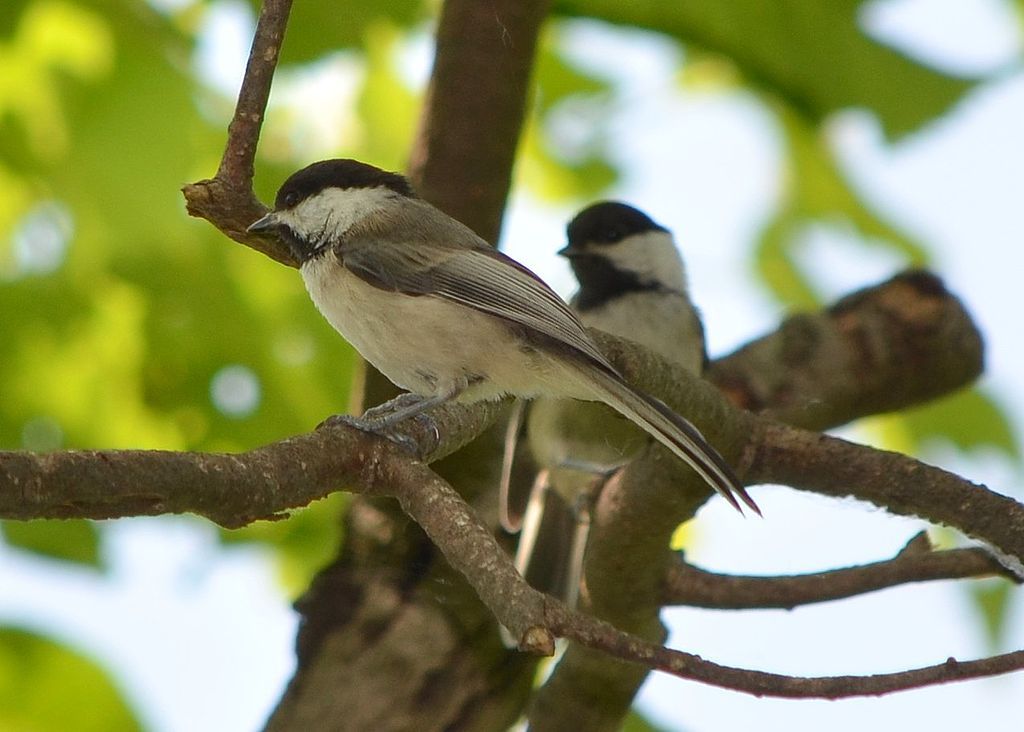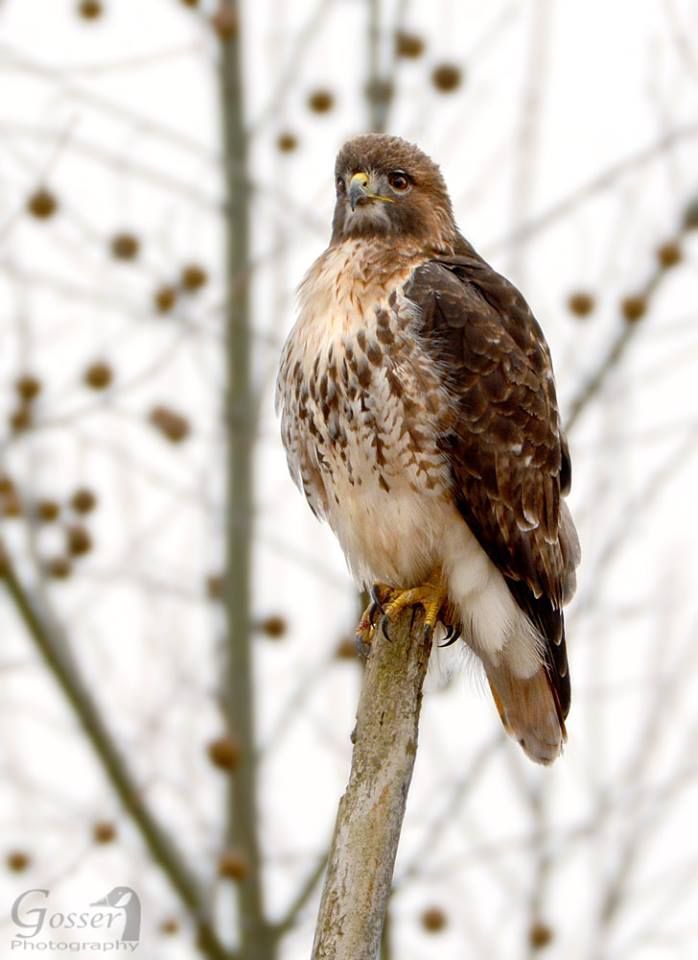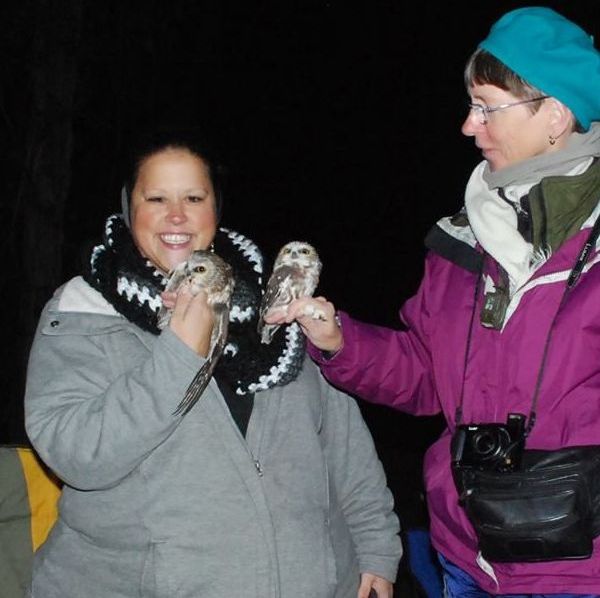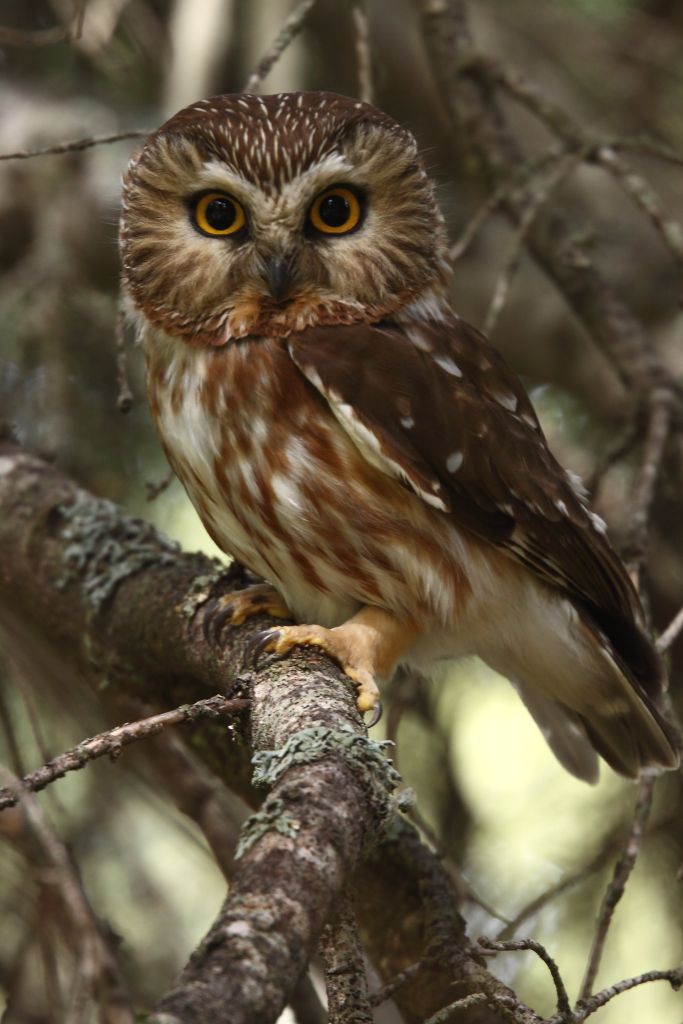
13 November 2024
When chickadees are upset they say dee-dee-dee-dee-dee but their message is different depending on predator size. As reported in a 2005 study of black-capped chickadee alarm calls:
The larger a predator’s wingspan or body length, the fewer “dee” sounds the chickadees used in their alarm call, the study found. The opposite was true for smaller predators –– the songbirds would use more “dee” sounds if they encountered a smaller bird, which could be greater threats to chickadees since they are more agile.
— CNN: Crows can count up to four, a new study finds
When chickadees see a red-tailed hawk they give a warning but these hawks are large, relatively slow, and unlikely to capture a chickadee.

So the chickadees slow down their warning dee’s … like this.
On the other hand, northern saw-whet owls are small and agile, just the right size to capture chickadees. You can see how small they are as I held one at an owl banding in 2016.

So when a chickadee sees a saw-whet owl …

… his warning call is frantic … like this.
By the way, the chickadee warnings in this audio were recorded at State Game Land No 203 in Wexford, PA while the birds were alarming at an Eastern Screech-owl. Screech-owls are another dangerous predator of chickadees.
When you hear chickadees, listen for their warning calls to tell you how big the predator is.
If I could find some frantic chickadees, I might find an owl.